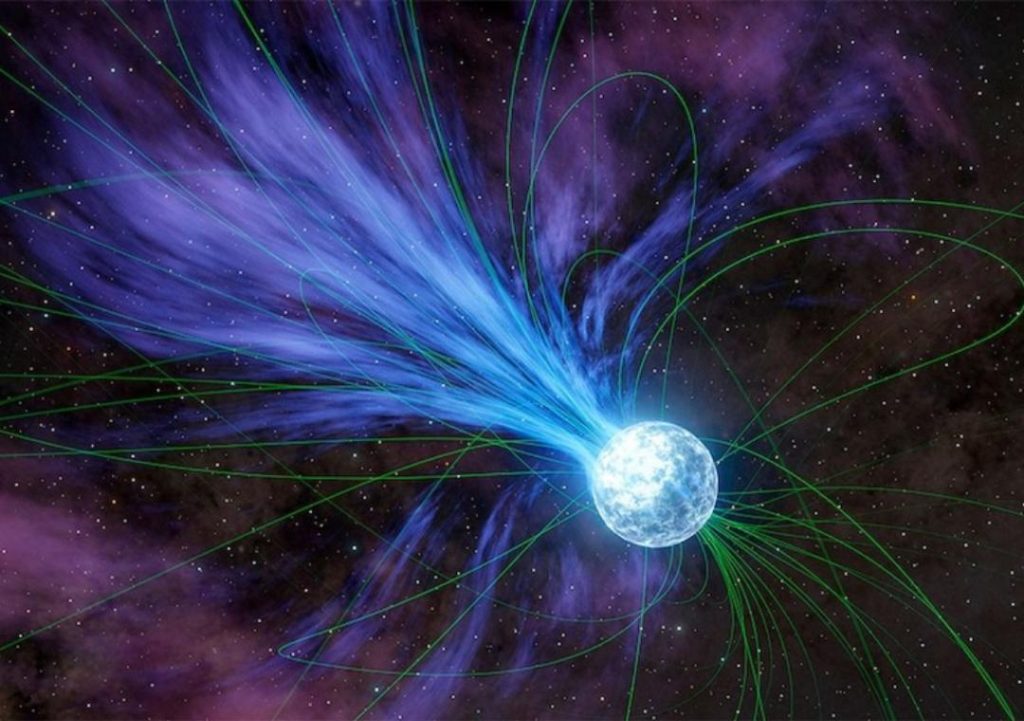
Gold & Platinum Created through Neutron Stars’ Explosions: Study
For centuries, humans have been fascinated by the origins of precious metals like gold and platinum. Scientists have long debated the formation of these valuable elements, with some theories suggesting they were created in the hearts of stars. Now, a groundbreaking study has shed new light on the origins of these precious metals, revealing that they were indeed created through the explosions of magnetars, or highly magnetized neutron stars.
Led by Columbia University student Anirudh Patel, the study published in the journal Nature Astrophysics provides conclusive evidence that magnetars played a crucial role in the creation of elements like gold and platinum. According to the research, these magnetars exploded and released flares that contained these elements, a phenomenon that occurs approximately once per decade in the Milky Way and annually across the observable universe.
The origins of precious metals have long been a topic of interest and debate among scientists. While some theories suggested that these metals were created in the hearts of stars, others proposed that they were formed through the collision of smaller celestial bodies. However, the latest study provides conclusive evidence that magnetars are responsible for the creation of these valuable elements.
Magnetars are a type of neutron star that is characterized by its extremely strong magnetic field. These stars are formed when a massive star undergoes a supernova explosion, leaving behind a dense core of neutrons. The intense magnetic field of the magnetar creates a powerful energy source, which is released in the form of explosive flares.
The study used data from NASA’s Fermi Gamma-Ray Space Telescope to analyze the energy released by magnetars. By studying the gamma-ray emissions from these flares, the researchers were able to detect the presence of elements like gold and platinum. According to Patel, “The flares from magnetars are incredibly powerful, releasing as much energy as a billion suns in a single burst. This energy is enough to create heavy elements like gold and platinum.”
The researchers used computer simulations to model the explosions of magnetars and the subsequent creation of heavy elements. The simulations showed that the intense energy released by the flare was sufficient to create the heavy elements, including gold and platinum.
The findings of the study have significant implications for our understanding of the origins of precious metals. According to Patel, “Our study provides conclusive evidence that magnetars are responsible for the creation of gold and platinum. This means that these valuable elements were created in the explosions of magnetars, rather than in the hearts of stars.”
The study also sheds light on the role of magnetars in the creation of other heavy elements. According to Patel, “Magnetars are responsible for creating a wide range of heavy elements, including gold, platinum, and even uranium. This means that these elements were created in the explosions of magnetars, rather than in the hearts of stars.”
The findings of the study have significant implications for the field of astrophysics. According to Patel, “Our study provides new insights into the origins of heavy elements and the role of magnetars in the universe. This means that we can better understand the formation of the elements that make up our universe, including the precious metals that we value so highly.”
In conclusion, the study led by Anirudh Patel provides conclusive evidence that magnetars are responsible for the creation of elements like gold and platinum. The explosions of these highly magnetized neutron stars release powerful flares that contain these valuable elements, a phenomenon that occurs approximately once per decade in the Milky Way and annually across the observable universe. The findings of the study have significant implications for our understanding of the origins of precious metals and the role of magnetars in the universe.






